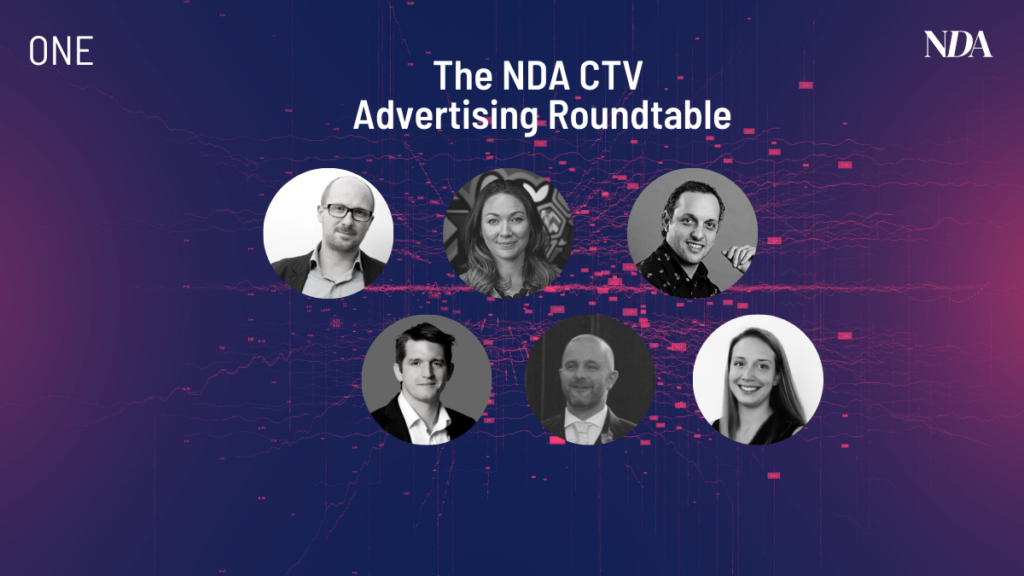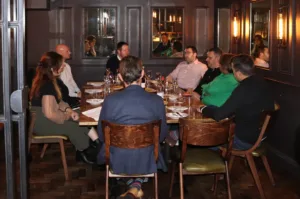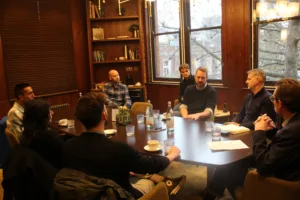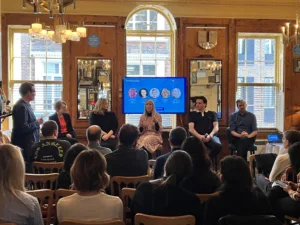NDA recently ran a roundtable discussing connected TV and the opportunities it presents. On the roundtable, we heard the thoughts of Pete Markey, Chief Marketing Officer at Boots; Melissa Blaha, Head of Product, Data and Analytics at Finecast; Daniel White, Group Director, EMEA at DoubleVerify; Andy Jones, Head of Agency Development at Samsung Ads; Alex Debenham-Burton, VP, Head of Reservation Media at Essence Global; Rhys McLachlan, Director of Advanced Advertising at ITV; and Charlie Glyn, Ad Technology Lead at 4 Sales (Channel 4).
Connected TV (CTV) – like much of the digital space – has benefited greatly from the pandemic. With people stuck at home throughout a series of lockdowns, many turned to streaming services and CTV to keep themselves occupied and entertained. The world of CTV was already growing, but the pandemic accelerated the trend and now there’s no turning back. And this opens the door for advertisers to reach the audiences they may be struggling to reach via other avenues.
“I work in CTV day in and day out, and I can really see the potential and the future of this particular type of medium,” said Finecast’s Blaha. “I think it’s a really exciting time to be in it, especially as the pandemic has accelerated all sorts of trends in the space and made it a really creative and innovative place to work.”
DoubleVerify’s White is in agreement about the potential of CTV, because “it’s opening up new audiences for advertisers and brands”, and is confident about the impact that advertisers can make over the channel.
“TV advertising has always been my favourite,” White shared. “I think it’s the most impactful. The ads I remember from my childhood are the TV ads.”
DoubleVerify’s White is in agreement about the potential of CTV, because “it’s opening up new audiences for advertisers and brands”, and is confident about the impact that advertisers can make over the channel.
“TV advertising has always been my favourite,” White shared. “I think it’s the most impactful medium. The ads I remember from my childhood are the TV ads.”
Emerging into the light
The emergence of CTV has also meant that there are now more parts of the TV ecosystem working together more closely. One of the players that isn’t normally thought of in the TV space is the TV manufacturers themselves. But now, with the ecosystem changing, these manufacturers are able to deliver ad formats of their own on their smart TVs. An example of a brand doing just that is Samsung.
“From a media point-of-view, representing a brand – such as Samsung – where we can see this TV viewing and the habits changing is exciting,” said Samsung’s Jones. “The way that we can work with advertisers and media agencies is also incredibly exciting, because we’re just adding new data and new audiences that they can now reach.”
These changes also mean that TV is beginning to converge with the world of programmatic and become more aligned with the online digital world as a whole.
“My background was programmatic on the agency side, before coming into the broadcast world. I genuinely didn’t realise the digital capabilities and the setups that already exist, especially on the broadcaster side, which just gives us so much of an opportunity” explained Channel 4’s Glyn.
“What I’m now finding exciting is seeing the new linear world and digital world of broadcast actually starting to converge with programmatic and with more addressable advertising. You’ve got the perfect marriage there of the big screen with the addressability and efficacy of digital.”
Not much of a challenge?
Though CTV presents a whole host of opportunities right across the media industry, like anything, it also comes with its obstacles that have to be overcome.
One of these hurdles is that the CTV world is open to far more players than linear TV – with a list of platforms providing ad-funded content ranging from the likes of ITV and Channel 4 through the YouTubes of this world. Having all of these platforms means there is a huge amount of data available, but it can be difficult for advertisers to bring all those data points together.
“With CTV, there are all these different ecosystems and walled gardens. Even YouTube is part of that – and 30% of impressions come from there. Then, obviously, you’ve got the smaller players like Rakuten and Roku,” said Essence’s Debenham-Burton.
“I think there’s loads of data; the issue we have is consistency of data, and how you join some of those dots. There are so many different selling points to different content providers with different datasets, and you can make a case for all of them. It’s about picking and choosing the right one at the right time. No one is mutually exclusive to another.”
However, despite this potential challenge, the industry may be perfectly placed to get things right on CTV, because “we’ve got sufficient impressions, we’ve got high-quality first-party data, we’ve got all the right consent mechanisms in place, and the utility of that data to augment it with other data sources,” according to ITV’s McLachlan.
“From a TV perspective, this is a moonshot leap forward from where most TV buyers and advertisers have previously been working. From a digital perspective, we’re not a near infinite supply ecosystem like display or social. We’re not doing cookie drops and daisy chaining through nebulous or nefarious consent mechanisms,” added McLachlan.
“We are entering the CTV space looking to ensure the integrity and the sanctity of television is maintained and preserved, while looking to complement that with what’s best in digital. That’s how we’re going to build a sustainable, long-term ecosystem that continues to present a brand safe, fraud-free, high-integrity environment that drives business outcomes for clients.”
One of the brands that is working with both ITV and Channel on CTV is Boots, which is equally positive about the potential the channel offers. The health and beauty retailer also recently worked with LG on making Love Island shoppable by enabling viewers to purchase the products seen in the show.
“I enter it from a really positive, glass half full, perspective. I haven’t faced any of those barriers yet,” said Boots’ Markey. “The data that we’ve got back from the LG pilot has been great. And the data sharing we’re able to do with the likes of InfoSum through Channel 4 and ITV is super exciting.
“I appreciate its early days, but I’ve not faced any of those challenges yet. Maybe that’s reflective of the fact that, as this widens out and becomes a bit more mainstream in how we approach TV, some of those barriers might emerge. But view me very much on the positive side of things at the moment.”









